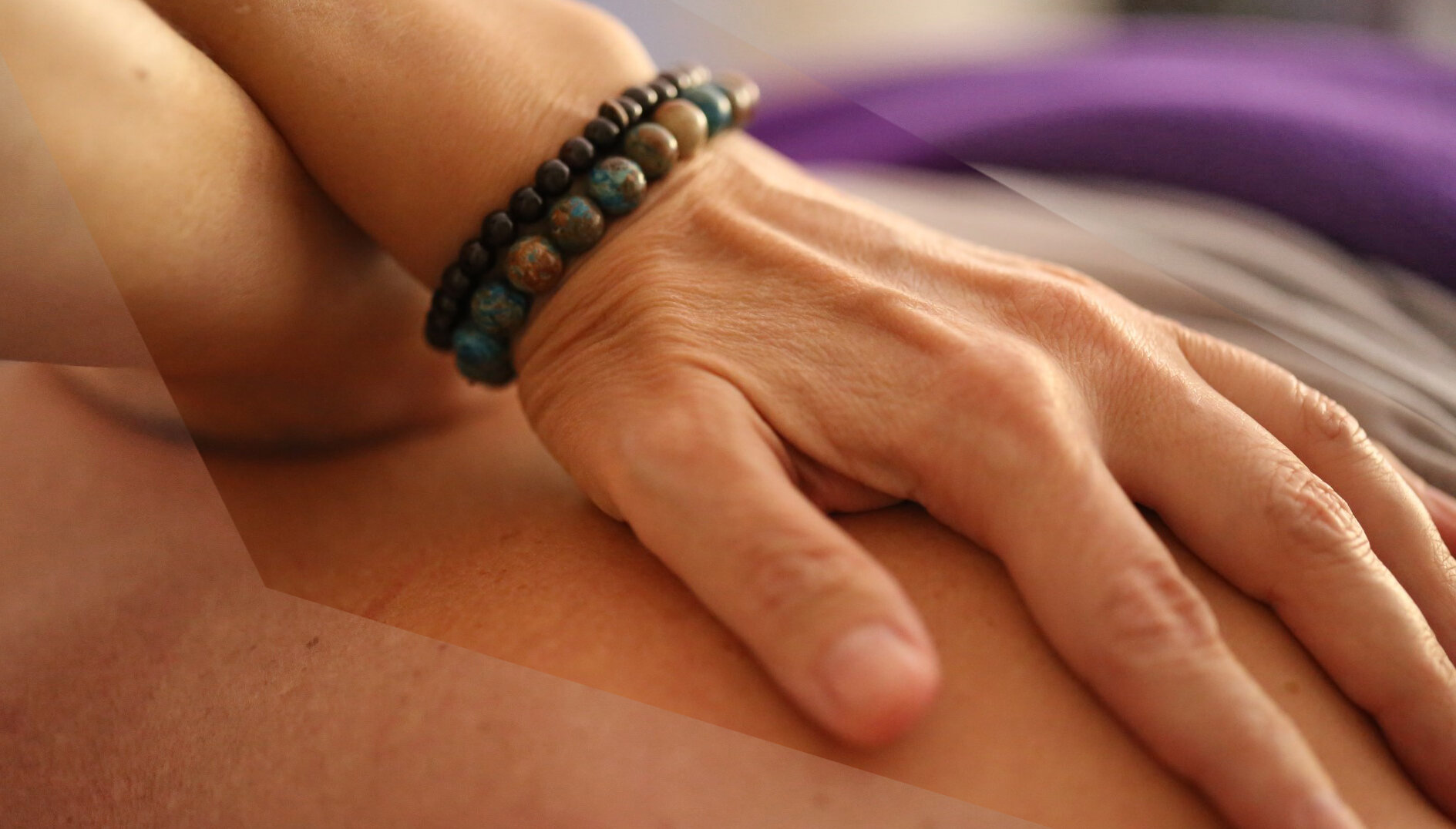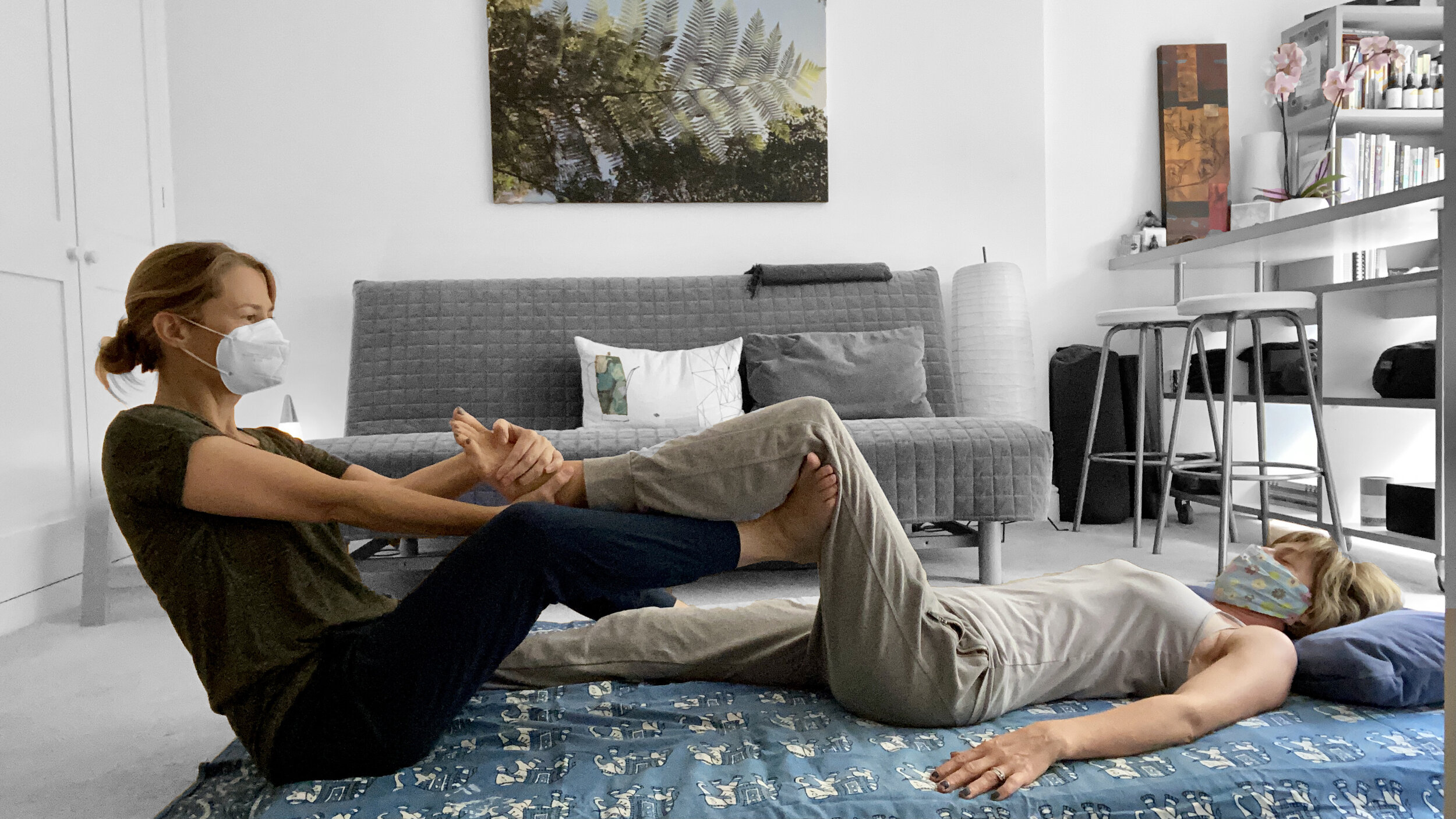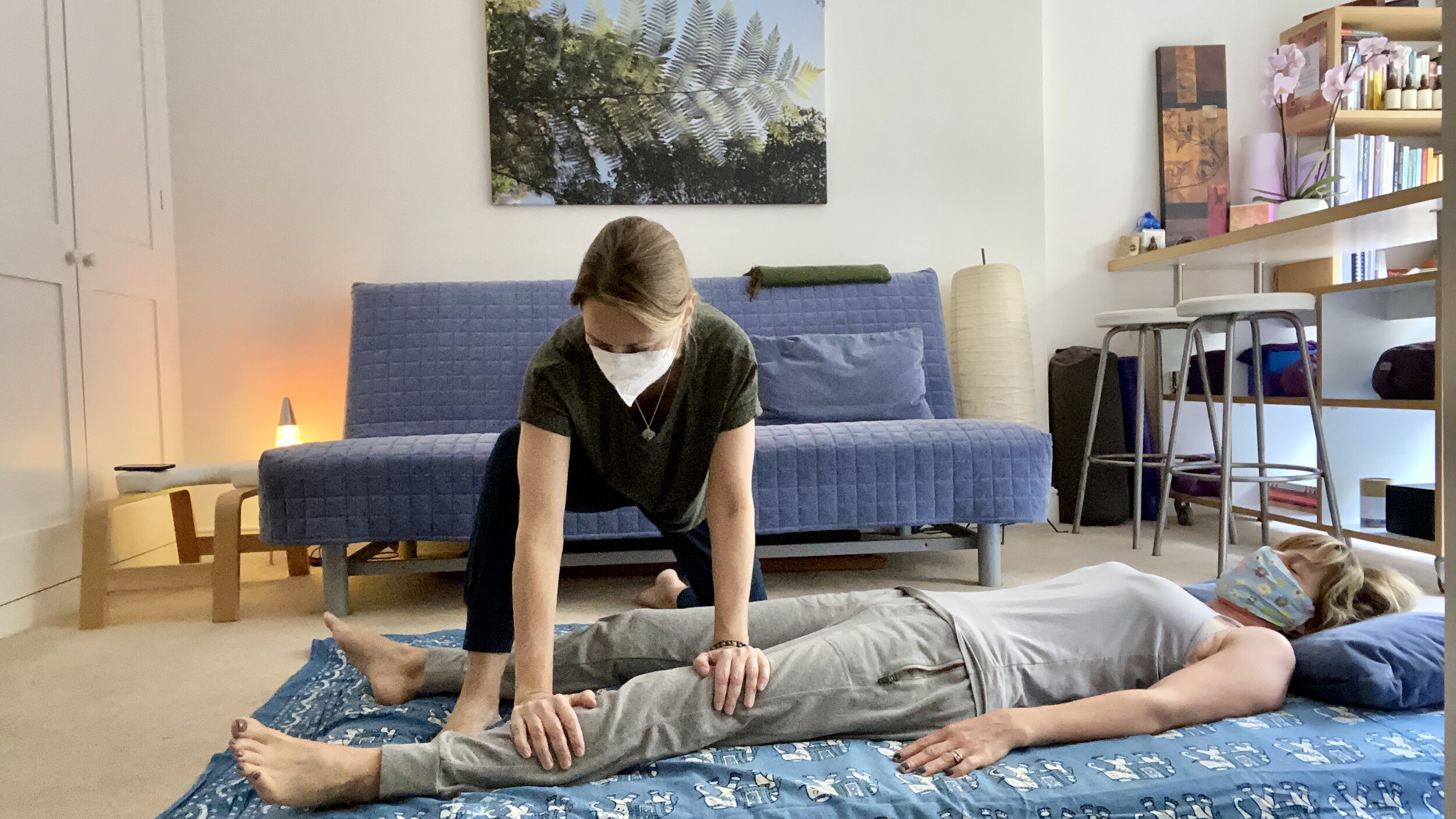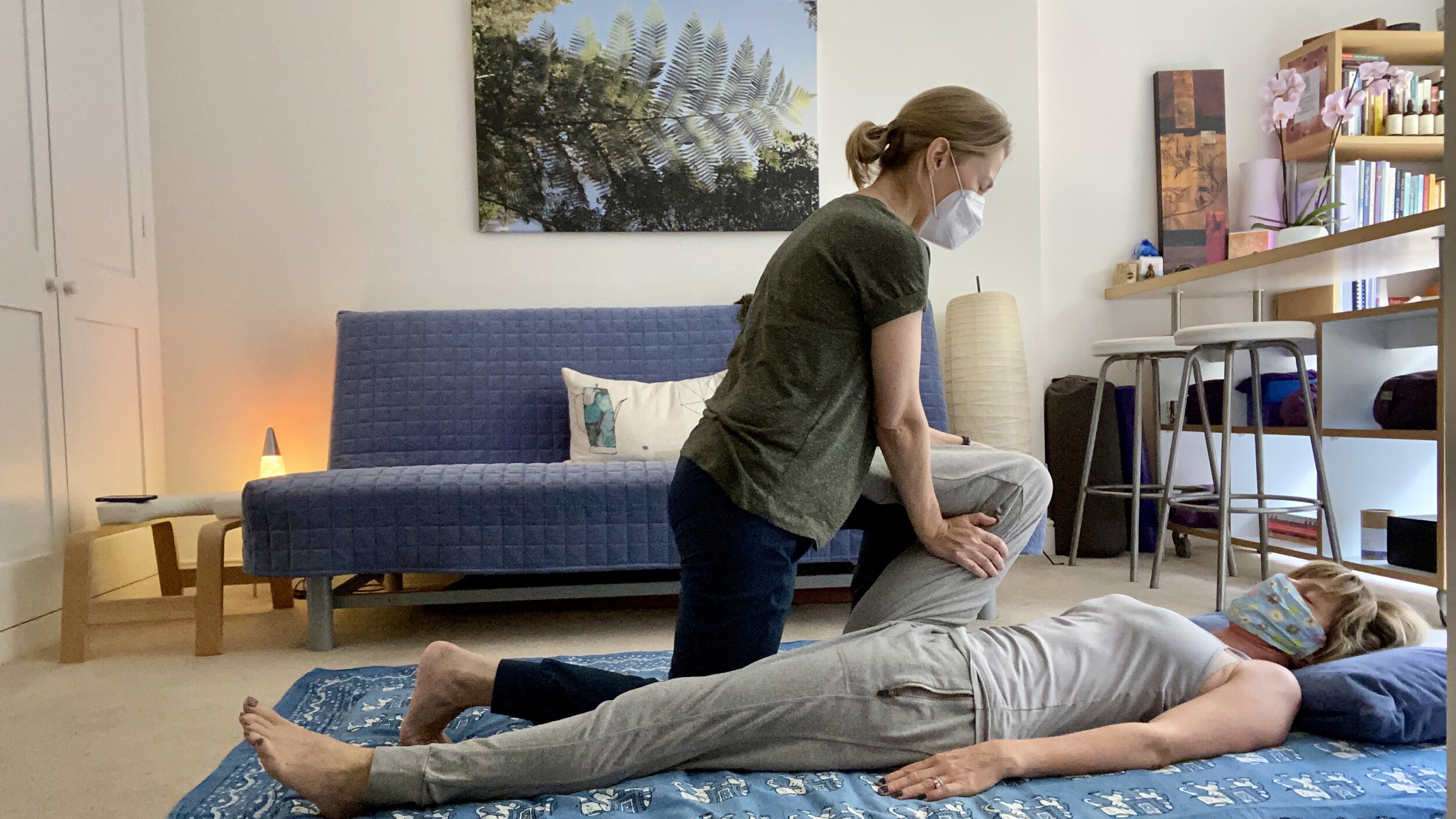
“There are only two ways to live your life. One is as though nothing is a miracle. The other is as though everything is a miracle.”
The two types of manual therapy I currently offer are;
Myofascial Release is especially effective for releasing constrictions in the connective tissue of the body. When the same pattern is repeated over and over again in the body, the ‘scaffolding’ underneath the skin and surrounding the muscles will become more dense and tight. Movement therapy can help release this tightness from the inside, but when the pattern is so tightly woven, manual therapy can help. That is where MFR comes in.
Thai Yoga Massage is great way to improve flexibility while restoring balance and harmony.
Myofascial Release (MFR)
Postural pain is often caused by fascia becoming restricted and stuck. Myofascial release (MFR) is an effective manual therapy helping to release this fascia.
Fascia is soft connective tissue wrapping in and around muscles, nerves, bones, blood vessels and organs. It provides structure and tension and is essential for postural integrity through proprioception (awareness of the position and movement of the body). For research on fascia see here.

Fascia consists of collagen, elastin and ground substance (a gel-like substance containing molecules which are very good at absorbing water). It is very fluid, and allows the various tissues to glide over each other. A myofascial unit is muscle tissue with its accompanying fascia wrappings. Myofascial restrictions can develop because of injuries, surgery, posture, repetitive movements, stress or, for most of us, some combination of these.
Image of fascia under the skin
Myofascial release is a gentle hands-on therapy that works deep into the body to help release these restrictions and return the body to more normal pain-free balance. It usually takes around 6 weekly treatments, to feel a sustained improvement of the symptoms. An important addition is the combination with movement therapy, which teaches self-help exercises to do at home, creating postural awareness and helping to remain pain-free in the longer term.
MFR resembles massage but has a more targeted approach with deep sustained pressure, with the goal of releasing restrictions in the layers of fascia which are stuck. The combination of heat and sustained pressure of the therapist’s hands that can return the fascia to its healthy fluid state.
“Injury, inflammation, and disease can cause myofascia to contract and dehydrate. This can result in reduced mobility, pain, or structural misalignment. When myofascia is contracted we call it a restriction which you can feel as tightness and knots (often in your shoulders and back).”
MFR APPOINTMENT
The initial MFR appointment consists of an initial discussion regarding your current pain patterns (and any medical conditions that might affect it) after which a physical assessment is carried out. This will include a short observation of your standing posture and sensing muscle tension while lying on the table.
As the treatment is best done directly on the skin, you will be required to change down to your underwear, or if you prefer shorts and a bra top. During treatment you will be draped with blankets or sheets.
MFR does not use lotions or oils, and it is advisable not to wear body lotion ahead of the treatment.
For more information or to book an appointment, contact me.
how does MFR differ from massage:
MFR is a whole-body treatment locating pain and looking where its cause originates, as the fascia surrounds every tissue and forms a 3-dimesional web under the skin
MFR is a manual therapy targeted at tight restricted myofascia; it resembles massage but has a more targeted approach with deep sustained pressure with the goal of releasing restrictions in the layers of fascia which are stuck.
MFR uses sustained pressure to allow the fascia to hydrate and soften (‘melt’)
MFR engages the client in the entire process promoting communication to enhance the response to the treatment
MFR encourages interoception (inner awareness) in the client
MFR can be combined with mindful movement to allow habitual patterns to be addressed
Some of the benefits of MFR:
increase in general health due to the increase in water volume (bound water) in the ground substance (nutrient and waste exchange)
promotion of relaxation and a sense of well-being
elimination of general pain and discomfort
increased proprioception and interoception
re-established and improved joint range of motion and muscle function
improved digestion, absorption, and elimination
restored balance and promotion of correct posture
injury recovery and rehabilitation
can be used as part of an athletic or sport training routine and maintenance programme to promote mobility and performance
promotion of awareness of emotional issues and how they may be resolved
Thai Yoga Massage (TYM)

“TYM is a fully clothed, floor-based whole-body treatment where pressure is applied (via hands, feet, elbows) to important points and energy lines in the body. This is combined with gentle stretching and applied Hatha yoga (it has the nickname of ‘lazy-person’s yoga’).”
I also practice Thai Yoga Massage (TYM), which is an ancient healing art. Like yoga, it works with energy lines, through which the body’s life force flows. The belief is that blockages in this life force can cause aches, pains, and disease.
Starting with the feet and working the energy up through the body, it usually takes around 90-120 minutes before the final head-massage leaves the receiver fully relaxed. During which time the blocked energy has been released, restoring balance and harmony.
Some of the benefits of TYM:
TYM treats ailments such as headache, knee pain, back, shoulder and neck pain, premenstrual tension and others. The treatment improves flexibility, relaxes, restores and energises.
“Originating in India and strongly linked to Buddhism, TYM is always practised in a meditative mood. It is said to be ‘the physical application of loving kindness’.”
TYM is a shared experience, mindful movement for both the practitioner and the receiver, a chance to explore a meditative space through movement and breath.
For more information or to book an appointment, contact me.






















